Honeysuckle variety Cinderella
Cinderella - honeysuckle of the mid-early ripening period of the selection of the Research Institute of Horticulture of Siberia. M.A. Lisavenko. Obtained in 1974 through selection among seedlings from free pollination of the selected form of Kamchatka honeysuckle No. 8 ("Start"). The authorship is assigned to Z.P. Zholobova, I.P. Kalinina and Z.I. Archer. In 1982, the variety was submitted for State testing. In 1991 it was zoned in the West Siberian (Altai Territory, Novosibirsk Region), East Siberian (Krasnoyarsk Territory, Republic of Khakassia) and Ural (Chelyabinsk Region) regions. Currently, the variety is included in the State Register for all regions of the Russian Federation.
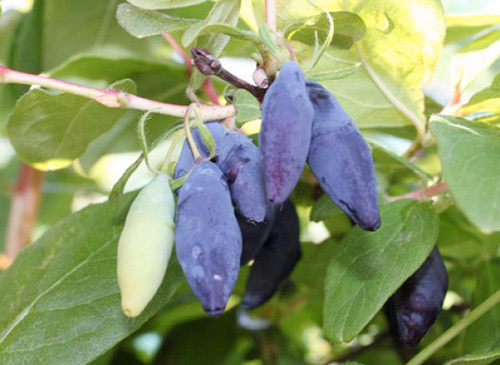
The bushes are low-growing, low (in height - up to 0.6 - 0.7 m; 2 times lower than the Blue Spindle variety), compact, with a dense crown. Shoots are straight or curved, thin, not pubescent, colored light green. The leaves are large, light green in color. The leaf blade is oblong-oval, with a slight concavity.
Cinderella honeysuckle berries grow to medium or large size (fruit weight varies from 0.7 to 1.4 grams, length - up to 1.7 cm), elongated-cylindrical (sometimes almost fusiform). The skin is thin, dark blue, almost black in color, covered with a delicate blue bloom. The stalks are medium.
The taste of the berries is very good, soft, harmonious, sour-sweet, a delicate strawberry aroma is felt. Tasting assessment of taste is one of the highest among the varieties of Siberian selection - 4.8 - 5.0 points. The chemical composition of the fruit may vary as interrelated with weather conditions. According to NIIS, Cinderella pulp contains: the sum of sugars (8.4 - 8.7%), acids (1.0 - 1.4%), vitamins C (20 mg / 100 g) and P (up to 599 mg / 100 g) ), pectin substances (1.12%). According to the purpose, the variety is universal. The processed products are highly appreciated: compotes and mashed berry mass with sugar are estimated at 5 points.
Fruit ripening occurs in the 1st or 2nd decade of June (often from the 15th to the 22nd day). At the same time, the ripening process itself is non-simultaneous to a low degree, slightly extended, but most often up to 90% of the crop is harvested at the first harvest. It should be noted that the short stature of the bushes makes it somewhat difficult to pick berries and makes it unpromising to use berry harvesters on industrial plantations. At the same time, the fruits are open for collection, there are almost none of them inside the spherical crown. Sprinkling of berries is weak (2 points).
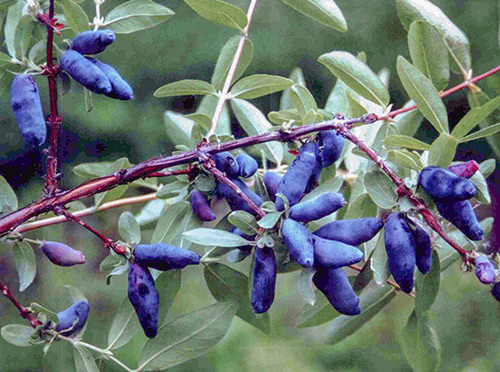
The variety is high-fruiting: single fruits appear already in the 2nd - 3rd year after planting. The yield is good: 4-year-old bushes give 0.5 - 0.8 kg of berries each (or 1.6 - 2.8 t / ha with a planting scheme of 3 × 1 m), at the time of full fruiting from 7 - 8-year-old bushes harvested from 2.4 to 5.5 kg of berries (or 8.0 - 11.7 t / ha). It should be borne in mind that the potential of Cinderella honeysuckle is fully revealed in conditions of sufficient water supply and good pollination.
This honeysuckle is endowed with a very high winter hardiness: over the years of observations at state cultivar plots in Siberia, as well as after the unfavorable winter of 1987-1988, no damage to the bushes from low temperatures and sharp temperature changes from positive to negative was noted. Flowers are immune to spring frosts. The variety is resistant to disease.
The variety is completely self-fertile. The best pollinators of Cinderella include varieties: Lazurnaya (the level of fruit set reaches 76%), Gerda (fruit set is 40 - 55%). Only 27 - 36.5% of fruits are tied with pollen of the Fire Opal variety. The following varieties can be good pollinators: Amphora, Kamchadalka, Leningrad giant, In memory of Gidzyuk, Parabelskaya, Tomichka. Poor pollinators include varieties: Berel, Blue Spindle, Salute. In general, when talking about pollinators for Cinderella, it is recommended to use all seedlings or selected forms of Kamchatka honeysuckle.
The variety reproduces well with green cuttings (rooting rate 96 - 97%).
Among the main advantages of honeysuckle, Cinderella is distinguished: an excellent dessert taste of berries even after very harsh winters, early ripening of fruits, high yield, winter hardiness and disease resistance.
The disadvantages include: insufficiently large size of berries, the likelihood (albeit low!) Of non-simultaneous ripening of fruits, rather rapid shedding of ripe berries, the impossibility of mechanized harvesting.
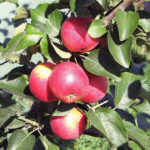
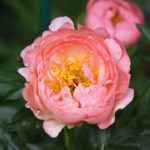

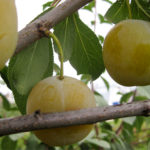
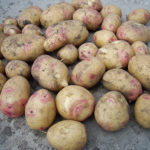
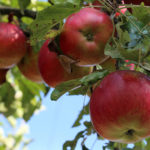



We have several such bushes on our site, my mother brought them from Omsk. They have taken root well, they grow quite quickly, they love the sun and moisture. Fruits were given in the third year in small quantities. Now the bushes are five years old, but there are still few berries, but the bush itself has grown in breadth. Cut out the extra branches, but it still looks thickened.
The berries ripen very uncommonly, you have to keep watch. If ripe berries are not picked in time, they crumble and shrink. Berries have a pleasant taste, but still more sour than sweet. The berry jam is tart, but we often eat it fresh, sprinkling the berries with sugar.
I like good cold resistance, because frosts below minus 40 ° C every winter. A viable culture. This year, one bush was thrown away, because we needed a place for another culture, so shoots started from the small roots that we did not choose.
Cinderella is not for the Vladimir region. The variety is just awful. The ends of the branches dry constantly. He absolutely does not reveal his potential in our conditions.